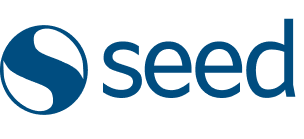
In early 2000, while most students at the University of Antwerp (Belgium) were living the usual rhythm of university life, two young men —Dries Buytaert and Hans Snijder— were looking for a solution to a latent problem: they needed a reliable Internet connection. At the time, permanent connections were rare among students, so they built a wireless bridge to share Hans' ADSL connection with other dorm mates.
It worked, but they soon noticed that something was missing: a way to communicate with each other.
Dries then created a small website with a message board, where they could share news, coordinate dinners, and discuss the status of their network. Unknowingly, they created more than just a site: the foundations of one of the world's most important collaborative platforms.
The mistake that set the course
When Dries finished his studies, he wanted to keep in touch with his friends, so he decided to put the site online. He thought of calling it dorp.org (Dutch for village), reflecting the community they had formed; however, when registering the domain, he made a mistake and wrote drop.org. He liked it, and the name stuck.
In January 2001, Dries went one step further: he published the site's source code, so others could use it, adapt it, and experiment. He called it Drupal, a way of pronouncing druppel, which means “drop” in Dutch.
From the beginning, the goal was clear: to build an open system where anyone could contribute, improve, and share. A vision that not only anticipated the growth of open source communities, but also laid the foundations for a global ecosystem.
First versions and rapid evolution
In the same year, three versions were released: 1.0 in January, 2.0 in March, and 3.0 in September. With each update, the community grew, and the system became more robust. What had started as an experiment among friends was beginning to reach more people.
Between 2002 and 2003, with versions 4.0 and 4.1, Drupal dramatically improved its performance and usability and began to gain notoriety outside technical circles.
From community software to a political platform
The turning point came in 2004, when the campaign team of Howard Dean —Democratic pre-candidate for the U.S. presidency— used Drupal to create DeanSpace, a decentralized network to promote citizen participation. The project pioneered the use of free software for political activism and laid the groundwork for what later became CivicSpace Labs, the first organization with full-time staff dedicated to developing Drupal-based technology.
This moment marked a milestone: Drupal was no longer a niche tool but a solid option for ambitious, high-impact projects.
A global platform that continues to grow
Since then, Drupal has been adopted by governments, universities, NGOs, media, major brands, and communities around the world. A key part of its success has been the global community behind it: thousands of people collaborate daily to improve the core of the system, develop modules, share knowledge, and support other users.
More than two decades later, Drupal continues to evolve. Its modular architecture, focus on security, and adaptability keep it relevant in an ever-changing digital world. What began as a student experiment now powers millions of sites around the world.
All thanks to a shared connection, a need to communicate, and a small typo that ended up changing the course of open source software.
